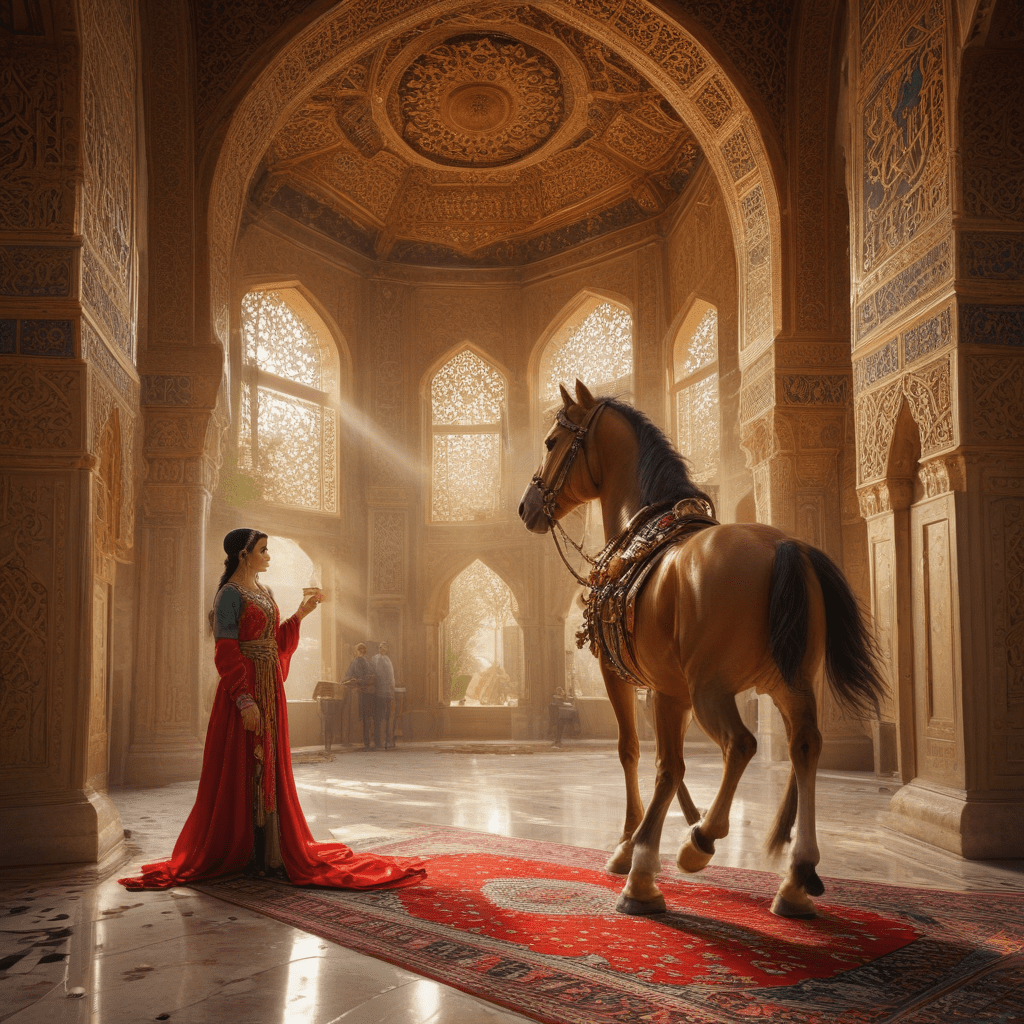The Influence of Persian Mythology on Islamic Culture
1. Introduction
1.1 A Rich Tapestry of Myth and Religion
Persian mythology, steeped in a vibrant history spanning millennia, boasts a rich tapestry of gods, heroes, and epic tales. This ancient mythology, deeply intertwined with the Zoroastrian faith, held sway over the Persian cultural landscape for centuries. However, the arrival of Islam in the 7th century CE marked a turning point in the region's religious and cultural landscape. While Islam brought significant changes, it also engaged in a fascinating dialogue with the pre-existing Persian traditions, leading to a unique blend of influences that shaped Islamic culture in profound ways.
1.2 The Interplay of Cultures
The arrival of Islam in Persia was not merely a political conquest but also a cultural encounter. While the initial response to the new religion was marked by resistance, the Persians gradually embraced Islam, though not without retaining elements of their own cultural heritage. This resulted in a fascinating interplay between the two traditions, with Islamic beliefs and practices being subtly influenced by Persian mythology and vice versa. This outline delves into the intriguing ways in which Persian mythology left its indelible mark on Islamic culture, exploring its impact on religious beliefs, literature, art, and architecture.
1.3 Exploring the Influence
This exploration of the influence of Persian mythology on Islamic culture will proceed by examining several key areas:
- Pre-Islamic Persian Mythology: This section will delve into the core tenets of Zoroastrianism, the dominant religion in pre-Islamic Persia, and introduce key figures and themes from Persian mythology.
- The Arrival of Islam in Persia: This section will discuss the historical context of the Islamic conquest of Persia and the subsequent interaction between the two cultures.
- Influence on Religious Beliefs and Practices: This section will explore the adoption of certain Zoroastrian concepts into Islamic theology and analyze the possible influence on Islamic eschatology.
- Influence on Literature and Poetry: This section will examine the impact of Persian mythology on the development of Islamic literature, particularly epic poetry, and the incorporation of mythical figures and themes into Islamic literary works.
- Influence on Art and Architecture: This section will investigate the influence of Persian mythology on Islamic art and architecture, focusing on the use of motifs and symbolism.
By examining these areas, we can gain a deeper understanding of the complex and multifaceted relationship between Persian mythology and Islamic culture, revealing the enduring legacy of Persia's rich mythological heritage within the Islamic world.
6. Influence on Art and Architecture
The influence of Persian mythology extended beyond the realm of religious beliefs and literary expression, leaving its mark on the visual arts and architecture of the Islamic world. Islamic artists, inspired by the rich imagery and symbolism of Persian mythology, incorporated mythical motifs and themes into their creations.
One notable example is the Verwendung of winged creatures, often depicted as guardian figures or symbols of divine power. The image of the Simurgh, a benevolent mythical bird from Persian mythology, frequently graced the walls of palaces and mosques, representing wisdom, protection, and renewal. Similarly, the motif of the winged horse, derived from the mythological creature Buraq, became a popular decorative element in Islamic art, symbolizing the Prophet Muhammad's ascension to heaven.
Persian mythology also influenced the architectural styles of Islamic buildings. The concept of the four-quartered garden, a prominent feature in Persian mythology, found expression in the design of Islamic gardens and courtyards. These gardens, with their central pools, geometric layouts, and lush vegetación, served not only as aesthetic spaces but also as symbolic representations of paradise. Additionally, the use of iwans, vaulted halls with open façades, in Islamic architecture can be traced back to the palatial architecture of ancient Persia.
7. Conclusion
The influence of Persian mythology on Islamic culture stands as a testament to the enduring power of myth and its ability to transcend religious and cultural boundaries. Through its impact on religious beliefs, literature, art, and architecture, Persian mythology has left an indelible mark on the Islamic world, enriching its traditions and shaping its cultural identity. The interweaving of Persian and Islamic elements has resulted in a unique blend, reflecting the dynamic interplay between two rich and vibrant cultures.
8. FAQs
What are the key features of Zoroastrianism?
Zoroastrianism, the pre-Islamic religion of Persia, is a monotheistic faith centered around the teachings of the prophet Zoroaster. Key features include the belief in a single god, Ahura Mazda, who is locked in an eternal struggle with the evil spirit Angra Mainyu. Zoroastrianism emphasizes the importance of free will, ethical conduct, and the afterlife.
Who are some important figures from Persian mythology?
Ahura Mazda, the all-powerful and benevolent creator god, represents the embodiment of goodness and light. Angra Mainyu, the evil spirit, embodies darkness and destruction. Zoroaster, the prophet who founded Zoroastrianism, is revered as a divine figure who received revelations from Ahura Mazda.
What are some common themes in Persian mythology?
The struggle between good and evil, dualism, and the importance of free will are recurring themes in Persian mythology. These themes are reflected in the stories of various mythical heroes who battle against evil forces to uphold righteousness.
How is Persian mythology related to Islamic eschatology?
The Zoroastrian concept of a final judgment and the idea of天堂和地狱may have influenced Islamic eschatology. Both religions share beliefs in a day of reckoning, a place of eternal reward for the righteous, and a place of punishment for the wicked.




